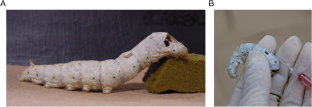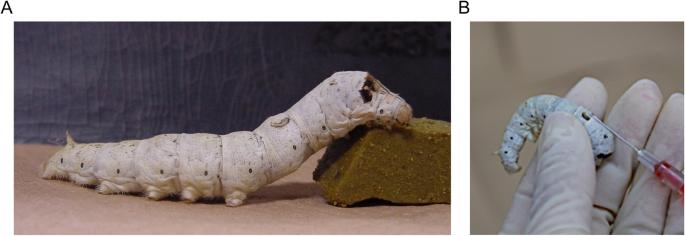Silkworm model of bacterial infection facilitates the identification of lysocin E, a potent, ultra-rapid bactericidal antibiotic
IF 2.1
4区 医学
Q3 BIOTECHNOLOGY & APPLIED MICROBIOLOGY
引用次数: 0
Abstract
The development of novel antimicrobial agents is required to solve the problem of antimicrobial resistance. We established a quantitative method for evaluating the therapeutic efficacy of antimicrobial agents in a silkworm bacterial infection model. Pharmacokinetic factors are present in the silkworm as well as in mice, and evaluating the therapeutic efficacy of antimicrobial agents is possible in a silkworm infection model, comparable to that in a mammalian model. This silkworm model was used to screen for novel antimicrobial agents with therapeutic efficacy as an indicator. As a result, a new antibiotic, lysocin E, was discovered. Lysocin E has a completely different mechanism of action from existing antimicrobial agents, and its potent bactericidal activity leads to remarkable therapeutic efficacy in a mouse model. In this review, I describe the features of the silkworm model that have contributed to the discovery of lysocin E and its mechanisms of action.


蚕的细菌感染模型有助于鉴定一种强效、超快速杀菌抗生素溶菌酶 E。
要解决抗菌剂耐药性问题,就必须开发新型抗菌剂。我们建立了一种在家蚕细菌感染模型中评估抗菌剂疗效的定量方法。蚕和小鼠一样存在药代动力学因素,因此在蚕感染模型中评估抗菌剂的疗效与在哺乳动物模型中评估疗效相当。这种家蚕模型被用来筛选以疗效为指标的新型抗菌剂。结果发现了一种新的抗生素--溶菌酶 E。溶菌酶 E 的作用机制与现有的抗菌剂完全不同,其强大的杀菌活性使其在小鼠模型中具有显著的疗效。在这篇综述中,我将介绍有助于发现溶菌酶 E 及其作用机制的家蚕模型的特点。
本文章由计算机程序翻译,如有差异,请以英文原文为准。
求助全文
约1分钟内获得全文
求助全文
来源期刊

Journal of Antibiotics
医学-免疫学
CiteScore
6.60
自引率
3.00%
发文量
87
审稿时长
1 months
期刊介绍:
The Journal of Antibiotics seeks to promote research on antibiotics and related types of biologically active substances and publishes Articles, Review Articles, Brief Communication, Correspondence and other specially commissioned reports. The Journal of Antibiotics accepts papers on biochemical, chemical, microbiological and pharmacological studies. However, studies regarding human therapy do not fall under the journal’s scope. Contributions regarding recently discovered antibiotics and biologically active microbial products are particularly encouraged. Topics of particular interest within the journal''s scope include, but are not limited to, those listed below:
Discovery of new antibiotics and related types of biologically active substances
Production, isolation, characterization, structural elucidation, chemical synthesis and derivatization, biological activities, mechanisms of action, and structure-activity relationships of antibiotics and related types of biologically active substances
Biosynthesis, bioconversion, taxonomy and genetic studies on producing microorganisms, as well as improvement of production of antibiotics and related types of biologically active substances
Novel physical, chemical, biochemical, microbiological or pharmacological methods for detection, assay, determination, structural elucidation and evaluation of antibiotics and related types of biologically active substances
Newly found properties, mechanisms of action and resistance-development of antibiotics and related types of biologically active substances.
 求助内容:
求助内容: 应助结果提醒方式:
应助结果提醒方式:


